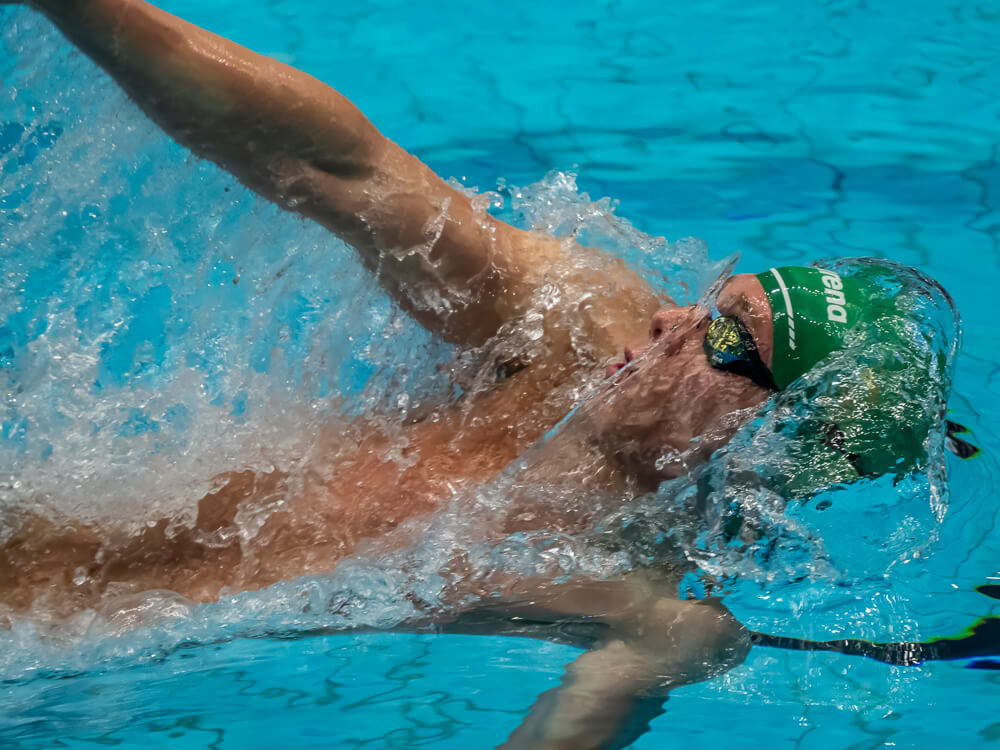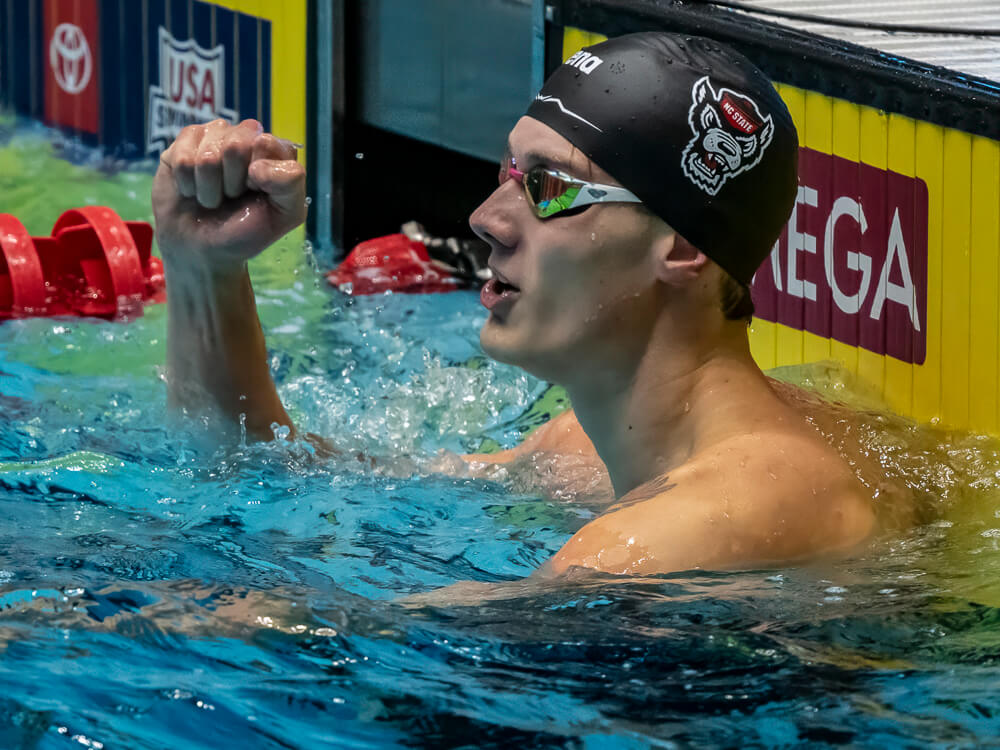U.S. Nationals Brings Generational Change to American Men’s Backstroke Field

U.S. Nationals Brings Generational Change to American Men’s Backstroke Field
With one announcement after another, change seemed inevitable for American men’s backstroke this summer.
First Hunter Armstrong revealed a near retirement that would at least lead regrouping this summer. Then Ryan Murphy took a step back from competition.
Its status as the world’s premier male backstroke program already imperiled, U.S. Nationals would have to bring new talents to the fore. It’s for a team that looks much different than the male backstroke contingent we’ve grown accustomed to.
The U.S. is sending five different men to the 2025 World Championships to swim backstroke this year: Quintin McCarty and Shaine Casas in the 50; Tommy Janton and Jack Aikins in the 100; Aikins and Keaton Jones in the 200.

Quintin McCarty; Photo Courtesy: Peter H. Bick
It’s an unprecedented contingent in several ways. First, it’s the most individuals the U.S. has ever sent, given a dearth of multi-event qualifiers. The U.S. sent three to the shoe-horned Worlds in 2024, with NCAA competition taking precedence. The number was four at every Worlds from 2011-23. (Selection priority for the 50 has changed over time, formerly limited to one dedicated qualifier and an extra swim for another athlete qualified in a different event, which factors in.)
Of the five headed to Singapore, Janton, McCarty and Jones are Worlds debutants. Jones swam the 200 at the Paris Olympics.
That sense of opportunity was clear to swimmers in Indianapolis this week.
“I think you hear the names Ryan Murphy, Shaine Casas, Hunter Armstrong, all these guys are people that you grew up swimming for,” McCarty said. “You are that guy trying to be on the next Team USA. And I think with a little bit of a later development, I’m really excited about where I’m headed, just moving forward and striving on, hopefully to be the next guy for Team USA who can step up.”
Three newcomers is an oddity: From 2003-24, just 16 different individuals represented American men’s backstroke in 12 editions of the World Championships. Of the two holdovers, Aikins swam only at 2024 Worlds. Casas has one previous Worlds backstroke swim, in the 200 in 2023.
It’s not just consistency but excellence. An American man medaled in every backstroke event at the Olympics for seven straight editions of the Games. In 14 medal events from Atlanta in 1996 to Tokyo in 2021, American men earned 12 gold and 21 total medals. The 200 back in Paris was the first since the 200 back in Barcelona 32 years prior without an American on the medal stand.
The men powering that history are pillars of American male swimming. Seven-time Olympic medalist Aaron Peirsol, still the world-record holder in the 200. Matt Grevers, owner of six medals. Murphy with his nine (five gold). Ryan Lochte (12 medals, six gold). Tyler Clary. Even Armstrong, a late bloomer who has collected seven Worlds golds and 15 total Worlds medals to go with three Olympic medals.
The new group has traveled unique paths. Janton came out of Lane 1 in the final to win. Worlds is by far his biggest international meet, eclipsing the World University Games. All for a swimmer who didn’t have a college season, with Notre Dame’s men’s team suspended for the year.
“I swam with a couple of my teammates and we were able to get to it,” Janton said. “The ones who were there held ourselves accountable. I really had a lot of faith in the coaching staff.”
McCarty doesn’t even call himself a backstroker so much as an all-purpose fast man – “I’m just a swimmer,” he said. “I love it all.” The Colorado Springs native didn’t love it as much when a back injury forced him to redshirt as a freshman, spending four months out of the water. He returned in the fall of 2023, making NCAAs in the 50 and 100 free as a freshman. He also anchored a pair of American record relays, the 200 medley and 200 free, for NC State.
When an injury befell Aiden Hayes this year, McCarty swapped to backstroke.
“Braden (Holloway, NC State coach) came up to me and was like, all right time to see if we can do any backstroke with you,” McCarty said. “So I just started training backstroke in October again, really got excited about it. Ended up doing some 50s throughout the collegiate season, had a pretty good one at NCAAs, and now guess I’m doing 50 backstroke for Team USA, which is really exciting.”
McCarty finished 13th in the 100 back (after qualifying ninth) at NCAAs, to go with eighth in the 50 free and 19th in the 100 free. He blasted a 20.24 leadoff, fastest in the field, in the 200 medley relay, and he led off the Wolfpack’s 400 medley relay that finished ninth at NCAAs despite setting an American record.
The change in American men’s backstroke may prove to be about quantity and quality. Murphy won bronze in the 100 back in Paris, but Armstrong failed to make the final. Jones finished fifth in the 200, Murphy missing the final in 10th. The old guard’s replacement at times has seemed overdue.
Casas ranks third in the world in the 50 back with a 24.23 from the TYR Pro Swim Series, while McCarty’s 24.34 ranks fourth. Nine swimmers have been quicker in 2025 than the 53.00 that Janton used to win the 100. Aikins (1:54.25) and Jones (1:54.85) set the first and third fastest times in the world in the 200.
The new faces have put themselves in a position to be the next wave of American male backstroke dominance. Now it’s a matter of showing it in Singapore.




